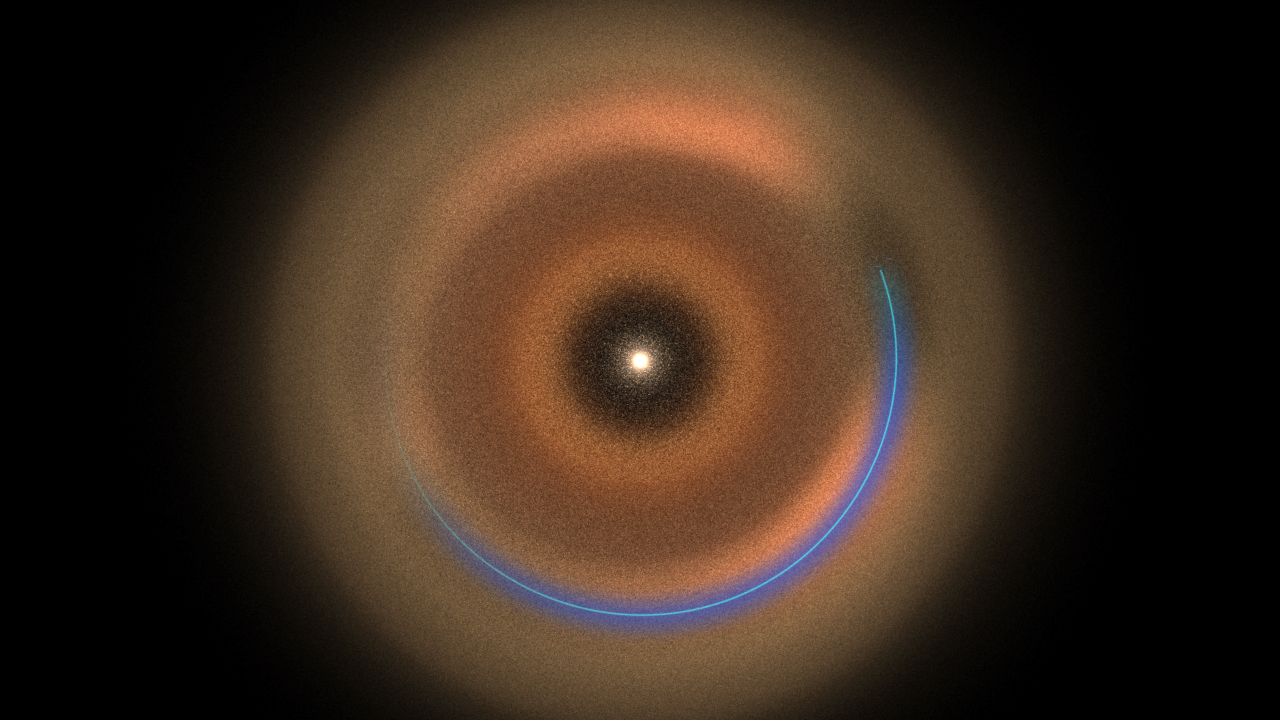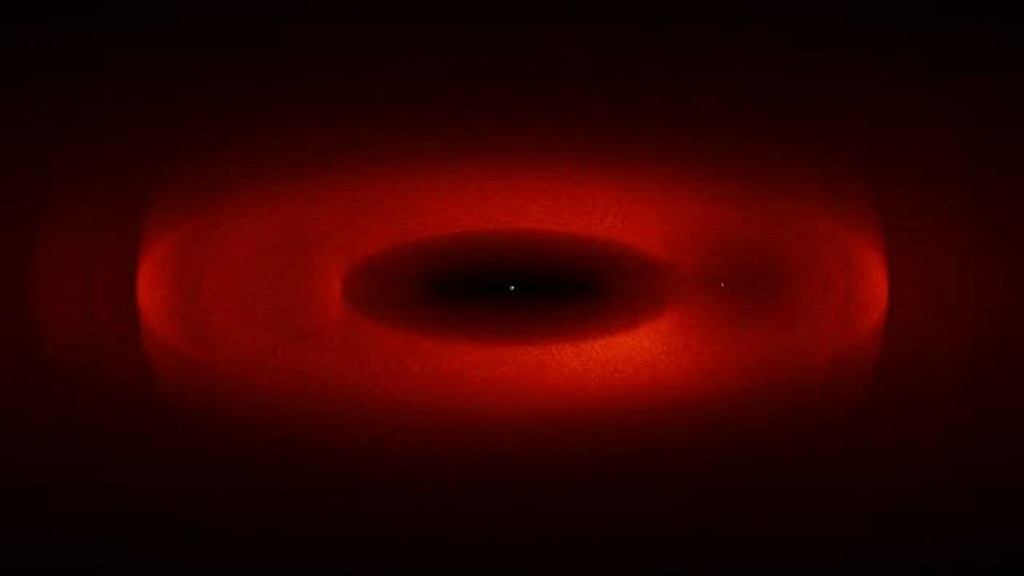Reviving Fomalhaut b
A second look at data from NASA's Hubble Space Telescope is reanimating the claim that the nearby star Fomalhaut hosts a massive exoplanet. The study suggests that the planet, named Fomalhaut b, is a rare and possibly unique object that is completely shrouded by dust.
Fomalhaut is the brightest star in the constellation Piscis Austrinus and lies 25 light-years away.
In November 2008, Hubble astronomers announced the exoplanet, named Fomalhaut b, as the first one ever directly imaged in visible light around another star. The object was imaged just inside a vast ring of debris surrounding but offset from the host star. The planet's location and mass — about three times Jupiter's — seemed just right for its gravity to explain the ring's appearance.
Recent studies have claimed that this planetary interpretation is incorrect. Based on the object's apparent motion and the lack of an infrared detection by NASA's Spitzer Space Telescope, they argue that the object is a short-lived dust cloud unrelated to any planet.
A new analysis, however, brings the planet conclusion back to life.
Watch this video on YouTube.
In 2008, Hubble astronomers announced the detection of a giant planet around the bright star Fomalhaut. Recent studies have questioned this conclusion. Now, a reanalysis of Hubble data has revived the 'deceased' exoplanet as a dust-shrouded world with less than twice the mass of Jupiter. Credit: NASA's Goddard Space Flight Center
For complete transcript, click here.

On November 13, 2008 Fomalhaut b was announced as an exoplanet. Then on January 20, 2012, a paper was published calling this status into question. Now, a new study has reanimated this formerly "dead" exoplanet.

On November 13, 2008 Fomalhaut b was announced as an exoplanet. Then on January 20, 2012, a paper was published calling this status into question. Now, a new study has reanimated this formerly "dead" exoplanet. Alternate version.

This visible-light image from the Hubble Space Telescope shows the vicinity of the star Fomalhaut, including the location of its dust ring and disputed planet, Fomalhaut b. A coronagraphic mask helped dim the star's brightness. This view combines two 2006 observations that were taken with masks of different sizes (1.8 and 3 arcseconds). Labels.
Credit: NASA/ESA/T. Currie (U. Toronto)

This visible-light image from the Hubble Space Telescope shows the vicinity of the star Fomalhaut, including the location of its dust ring and disputed planet, Fomalhaut b. A coronagraphic mask helped dim the star's brightness. This view combines two 2006 observations that were taken with masks of different sizes (1.8 and 3 arcseconds). No Labels.
Credit: NASA/ESA/T. Currie (U. Toronto)
This is an artist's impression of the exoplanet, Fomalhaut b, orbiting its sun, Fomalhaut.
Credit:ESA/Hubble (M. Kornmesser) and ESO (L. Cal
Formation of a ring around an extrasolar planet (artist's impression)
Credit: ESA/Hubble (M. Kornmesser & L. L. Christensen)
View and download multiple formats of this video at ESA/Hubble's website.
For More Information
Credits
Please give credit for this item to:
NASA/Goddard Space Flight Center. However, individual images should be credited as indicated above.
-
Animators
- Scott Wiessinger (USRA)
- Chris Smith (HTSI)
- Genna Duberstein (USRA)
-
Video editor
- Scott Wiessinger (USRA)
-
Narrator
- Chris Meaney (HTSI)
-
Producer
- Scott Wiessinger (USRA)
-
Writers
- Scott Wiessinger (USRA)
- Francis Reddy (Syneren Technologies)
Release date
This page was originally published on Thursday, October 25, 2012.
This page was last updated on Wednesday, May 3, 2023 at 1:52 PM EDT.
Series
This visualization can be found in the following series:Tapes
This visualization originally appeared on the following tapes:-
Fomalhaut b Zombie
(ID: 2012111)
Thursday, October 25, 2012 at 4:00AM
Produced by - Robert Crippen (NASA)
Papers used in this visualization
Datasets used in this visualization
-
[HST]
ID: 36
Note: While we identify the data sets used in these visualizations, we do not store any further details, nor the data sets themselves on our site.

